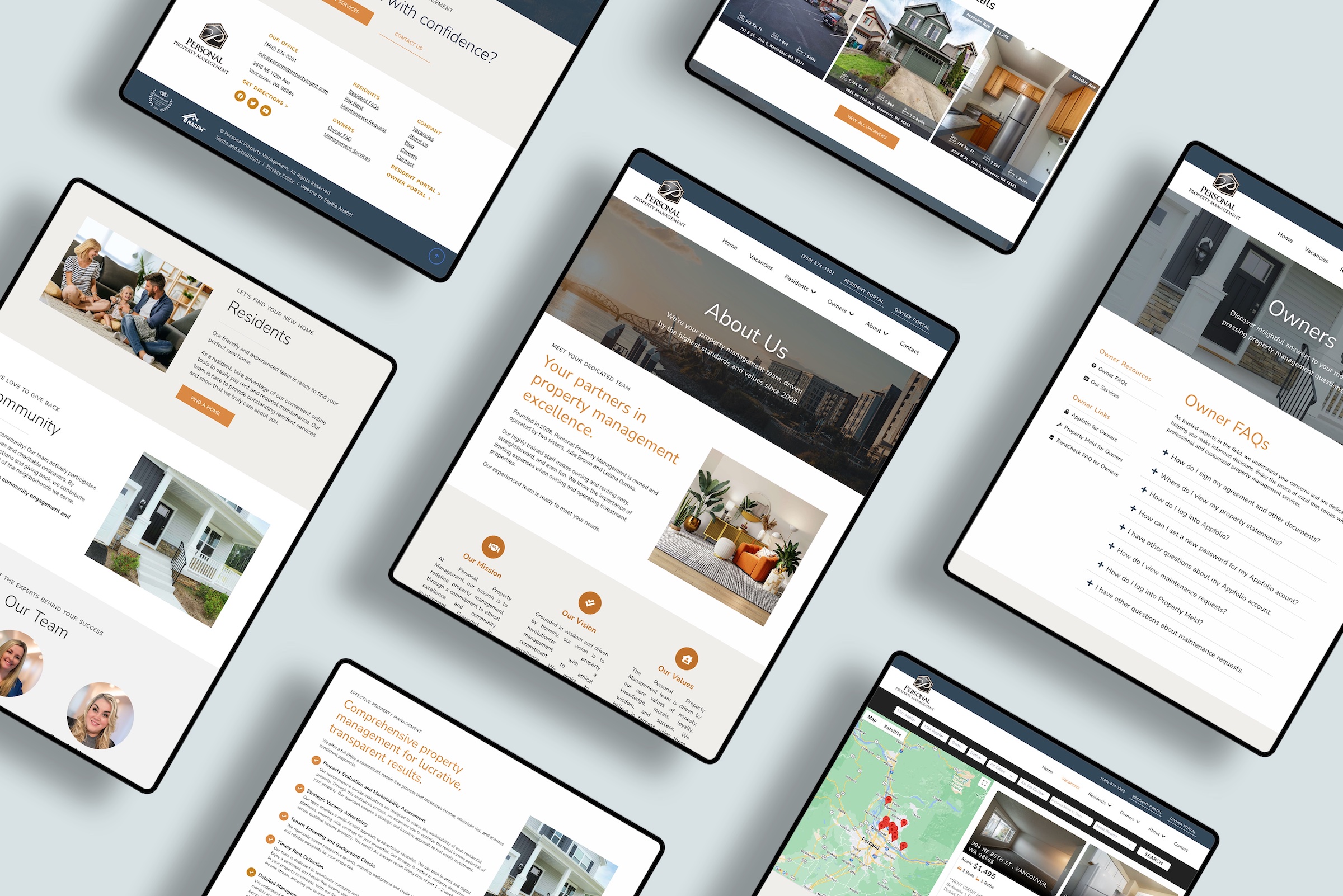Since 2013, Studio Anansi has designed websites, brands, and digital strategies for a diverse portfolio of clients. Our ethos extends beyond mere design — we are proud to provide eco-friendly and responsible services.
Our studio is committed to supporting a sustainable future for our clients and shared planet. Sustainability is an inseparable component of our operations and design philosophy.
Why do eco-friendliness and environmental responsibility matter for web design?
Many people assume that digital items such as websites don’t impact the environment. However, many websites have large environmental footprints. Every click and every page view leaves a carbon footprint.
Website Carbon estimates that the average website page produces 0.8 grams of CO2 equivalent per view. They calculate that one website with 10,000 monthly page views can produce a staggering 102 kilograms of CO2e emissions per year.
At Studio Anansi, we believe that web designers have a responsibility to mitigate the environmental footprints of our digital products and online services.
We’re helping pave the way to a greener future by practicing sustainable design principles and reducing resource consumption, one project at a time.
Studio Anansi embraces strategies that minimize environmental impact, prioritize efficiency, and maximize user experience.
At the core of our design approach are practices that prioritize user experience (UX) and efficiency:
- Develop organized, clean layouts
- Optimize website performance
- Reduce image sizes
- Build durable solutions
- Prioritize accessibility
We use modern layouts and clear navigation to guide visitors and minimize page loads.
Our websites are designed with clean layouts and straightforward navigation. These elements remove confusion and guesswork by guiding visitors to find information with minimal friction.
This organization mitigates visitor frustration and results in fewer page clicks — a win/win that engages audiences, builds trust, and reduces environmental demands.
We optimize for fast loading times and outstanding UX.
We craft websites that load quickly and require minimal resources, yet still deliver appealing and informative experiences for your visitors. Page caching and minification help our sites load faster, ensuring that they impress your audience and are less taxing on the environment.
We decrease image sizes and bandwidth usage to reduce resource demands.
Images are integral to web design, but they are often a major source of bloat and inefficiency. Our projects balance visual appeal and environmental responsibility by using image compression, lazy loading, and responsive design to minimize bandwidth usage.
We use future-thinking, durable solutions to minimize redesigns.
Eco-friendly web design is about more than just reducing immediate impact – it’s about building lasting solutions that don’t require frequent redesigns. We use scalable designs, forward-looking practices, and our signature Momentum Design framework to develop solutions that stand the test of time.
We prioritize accessibility to promote social sustainability and equal access to information.
We believe that truly responsible web designs must be inclusive. We use accessibility tools and design practices such as alt text to promote equal access for all visitors.
Although the environmental impact of websites is significant, we can build a more sustainable digital future.
Every website visitor and page view contributes to our planet’s ecological footprint. At Studio Anansi, we understand that our website designs and digital projects have both direct and indirect environmental impacts. We are committed to practicing sustainability and embracing resonsible design practices, paving the way for a greener future.
Ready to make a difference with your online presence?
Studio Anansi can help craft a website that not only captivates your audience but also minimizes its environmental footprint. Contact us today to start your journey towards a more environmentally responsible website.
Key Takeaways
- To build a greener and more sustainable future, web designers should aim to reduce the environmental footprints of digital products and online services.
- Designers can use modern layouts and clear navigation to guide visitors, reduce frustration, and minimize resource usage.
- Web designs that feature fast loading times and better UX help to reduce environmental impacts.
- Images are especially prone to bloat and high demands, so it’s important to compress graphics and use responsive design principles.
- Durable, future-thinking solutions help to conserve resources by reducing the need for frequent updates and redesigns.
- Accessibility contributes to social sustainability and helps provide equal access to information for all visitors.






